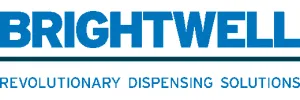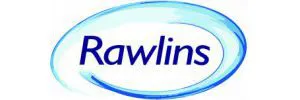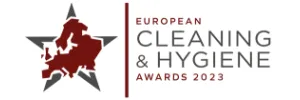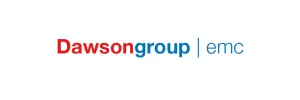News & Insights
Read the latest news from us and our clients across the globe

Posted on 13 March 2013 by adtrak.admin
Cleaning to counter contagion in dialysis centres
Gary Johns, Sales Director Designate of In Depth Managed Services, looks at the importance of using specialised staff and equipment to comply with international guidelines for cleaning a dialysis centre.
All hospitals and healthcare settings have risks related to contagion of infectious diseases for patients, hospital staff, as well as cleaning or housekeeping staff, but in a dialysis setting these risks are much bigger because renal patients may carry blood borne pathogens that could lead to infection of others.
Renal patients also have an increased risk of getting a healthcare-associated infection because the dialysis process requires frequent use of catheters or needles to access the bloodstream and the patients have weakened immune systems, which increase their risk for infection.
The risk of contracting MRSA, Hepatitis B and HIV are the biggest concerns in this type of environment.
Microorganisms that could cause disease are known to survive on inanimate ‘touch’ surfaces for extended periods of time. For example – bedrails, over-the-bed trays, call buttons and bathroom hardware.
Contract cleaners in a dialysis environment therefore have to be highly specialised to ensure they comply with standard guidelines for infection control in healthcare environments, as well as specific guidelines for dialysis centres in the relevant country.
Numerous guidelines on prevention of healthcare associated infections have been developed by the US Centres for Disease Control and Prevention (CDC) and by other national or regional bodies in European countries.
However, there are as of yet no clear Pan-European recommendations, which means the CDC guidelines for prevention of infection within a dialysis centre environment is often referred to in a European context.
Hand hygiene
According to the World Health Organisation (WHO) and the CDC, hand washing is the most important measure to prevent contaminant transmission in a healthcare environment. When to wear gloves and when to perform hand hygiene is therefore the first priority for everyone to be aware of, including cleaning operatives, who enter these areas.
In the case of patients with severely compromised immune systems such as renal patients, the risk of infection is very high and the WHO (Prevention of hospital-acquired infections – a practical guide) recommends hand and forearm washing with a good antiseptic scrub (contact 3-5 minutes), followed by drying with sterile disposable towels.
Alternatively, surgical disinfection procedures are recommended by rubbing including simple handwash and drying followed by two applications of hand disinfectant, then rubbing to dry for the duration of contact defined by the product.
These surgical procedures are recommended for anyone touching inanimate objects in the immediate vicinity of the patient.
Disposable gloves are recommended for cleaning staff in high risk areas such as isolation units, according to the Guide to the Elimination of Infections in Hemodialysis, published in 2010 by the Association for Professionals in Infection Control and Epidemiology (APIC).
Cleaning of the hospital environment:
Hand washing is the most important measure, but improperly cleaned and disinfected surfaces can be an almost unnoticeable infection transmission route.
The first step is routine cleaning to ensure the environment is visibly clean and free from dust and soil, according to guidelines for prevention of hospital acquired infections by the World Health Organisation – Europe – published in 2002.
Ninety percent of microorganisms are present within ‘visible dirt’ and the purpose of routine cleaning is to eliminate this dirt.
APIC guidelines also state that the process of physical or mechanical cleaning of environmental surfaces using detergent (soap), water, and friction is the critical step required prior to surface disinfection.
“The combination of the cleaning and disinfection processes is designed to remove and kill vegetative microorganisms on surfaces. Disinfection will not be effective in the presence of dirt, blood, or other body fluids. The goal of the cleaning step is to remove body fluids and with it, the majority of pathogens.”
Disinfection
Disinfection of the environmental surface is the next step and almost seen as a somewhat redundant step to ensure comprehensive removal of pathogens on surfaces.
The CDC’s Guideline for Disinfection and Sterilisation in Healthcare Facilities,
2008, states that, “non critical surfaces (for example, dialysis bed or chair, countertops, external surfaces of dialysis machines) should be disinfected with an EPA-registered disinfectant unless the item is visibly contaminated with blood.
A commonly used disinfectant for blood contaminated environmental surfaces is a 1:100 dilution of bleach (500–600 ppm free chlorine).
For each disinfectant, follow the manufacturer’s instructions regarding use, including appropriate dilution and contact time.
A hospital grade disinfectant is recommended by the International Federation for Infection Control – for all patient areas, with special attention to high touch items or surfaces likely to be contaminated with blood or body fluids.
The environmental surfaces in hemodialysis settings at highest risk of transmitting germs are described using different terms. From the perspective of the patient, the term “patient zone” is used to refer to the surfaces, which the patient can touch, or can touch the patient, including the chair, armrests, bedside table top/counter, and drawer/cupboard handles.
From the dialysis staff perspective, the term “high touch surfaces” is used to describe surfaces, which are frequently touched by staff. These include the same surfaces in the patient zone in addition to others such as the exterior surfaces of the dialysis machine, computer screens, and keyboards. Cleaning and disinfection of these surfaces (patient zone/high touch surfaces) should be performed between all patient treatments.
Separate cleaning equipment is recommended for each patient station and
A colour-coded system is also often used for different areas such as the kitchen, bathroom and general areas to be cleaned.
Disposable products, including gloves, aprons and mop heads, are recommended in isolation units.
Recommended Cleaning Processes:
There are certain principles that are recommended to optimise environmental cleaning in healthcare settings, including dialysis centres.
- Store cleaner/disinfectant separately from skin antiseptics/patient supplies (separate shelves and below patient supplies to avoid potential contamination).
- Perform hand hygiene before and after cleaning the patient station.
- Use gloves when using cleaner/disinfectants.
- Use one set of cleaning cloths or disposable germicidal wipes for each patient station.
- Use disposable microfiber cloths and mops, which are more effective cleaning products than regular cotton cleaning cloths.
- Clean all frequently touched or “high touch” surfaces in the “patient zone” between patient treatments (chair, armrests, counters, drawer/cupboard handles, exterior surface of the dialysis machine).
- Clean the top of an object first and work down to avoid soiling surfaces just cleaned.
- Fold the cleaning cloth in a series of squares to provide a number of potential cleaning surfaces.
- Replace cloth as needed. More than one cloth may be required for a patient station.
- Never use the same cleaning cloth for more than one patient unit.
- Never re-dip used cloth into clean disinfectant solution.
At the end of the day, additional cleaning functions in dialysis centres should include:
- Wet mop the floor.
- Clean patient/staff bathrooms and restock paper products/hand hygiene supplies.
- Check and refill all hand hygiene product dispensers in nursing stations and at patient stations (soap, paper towels, lotion, and alcohol-based hand sanitizer).
On a routine basis, walls and high dusting should be performed.
Waste generated by the dialysis facility could be contaminated and disposable items should be placed in bags thick enough to prevent leakage.
Because of the specialised nature of cleaning in dialysis environments, when outsourcing the housekeeping or cleaning of the environment, it is vital to ensure the company has experience and knowledge of the regulations, products and procedures needed to comply with infection control measures.
In Depth Managed Services have worked in dialysis centres across the UK for many years and have specialised staff and training procedures in place to reduce the risk of contagion in line with NHS and international guidelines.
Published in European Cleaning Journal – February/March 2013
Experts in Public Relations Services & Communications Management
Our ServicesGenuine industry specialists in cleaning and hygiene, environmental and recycling, and facilities management
Our Sectors












